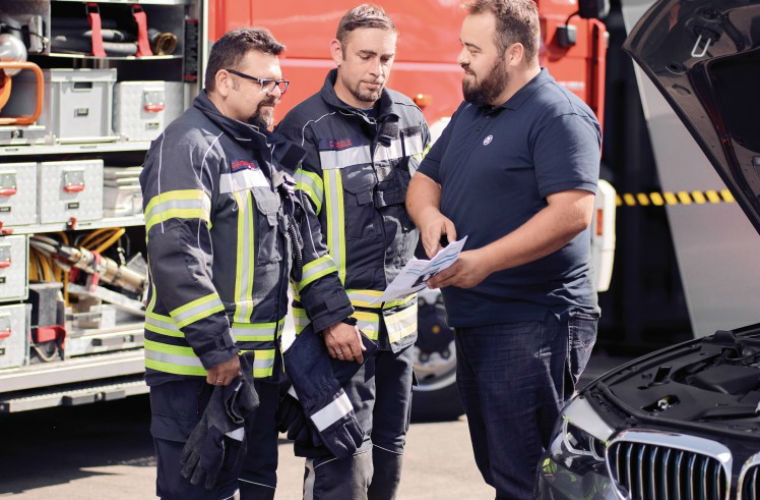ZF Aftermarket has launched an intensive hands-on training course to reduce the threat to emergency services when dealing with accidents involving hybrid and electric vehicles.
Electric vehicle fires are notoriously difficult to extinguish and require specific skills and equipment.
Fire can spread rapidly to the nearby cells of high-voltage batteries and cell damage can lead to so-called thermal leakage which is corrosive and highly dangerous.
A ZF spokesperson said: “Although fires associated with electric vehicles receive a great deal of bad press, this is due to the epic proportions such a fire reaches, or its unexpectedness – rather than its cause.
“There is no evidence to suggest that electric vehicles catch fire any more quickly than cars with combustion engines.
“Investigations into cases of so-called spontaneous self-ignition show that either the battery had been damaged in the run-up to the accident or that it had a design or manufacturing defect.
“It’s important for the men and women of the emergency services who will come into contact with electric and hybrid vehicle accidents to not only be aware of the dangers, but also to be equipped with the skills to deal with them.”
Hybrid and electric vehicle hazards
In addition to fire, ZF warns that there is also a danger of flammable or toxic gas escaping, electric shock and the formation of electric arcs.
The electrical supply infrastructure could also catch fire.
A damaged vehicle that has to be recovered from a river or a flood can be extremely hazardous for the rescue services.
Emergency services training
The training first covers vehicle identification, electric vehicle system design, protective mechanisms – such as the position and operation of the high voltage system’s isolating switch – suitable equipment and what to do in the event of the various accident scenarios.
Using real-life examples, the training also looks at the responsibilities of the emergency service personnel, the communication between them and how they deal with vehicle recovery operators.
For further information on the training courses, follow the ‘more details’ link below.







